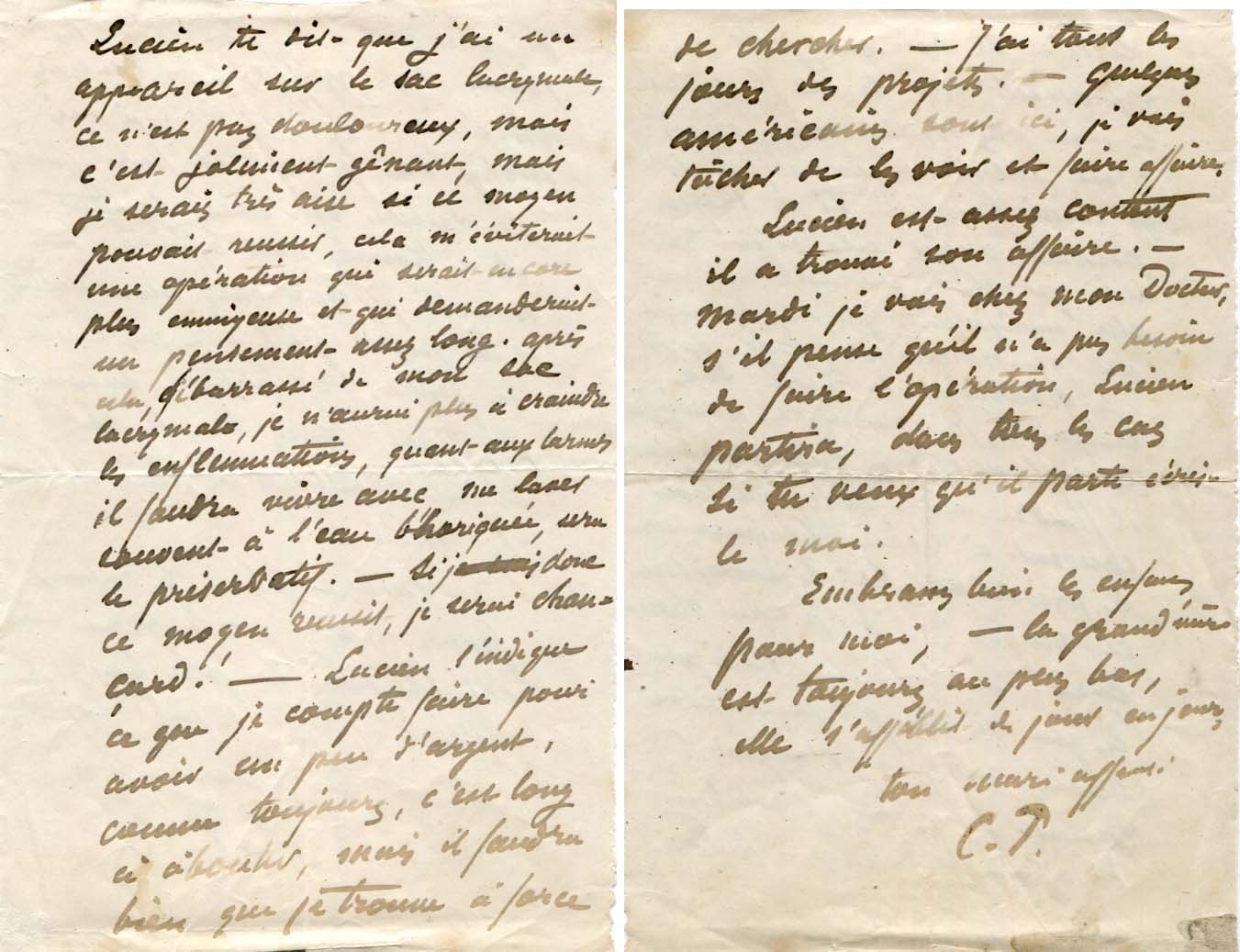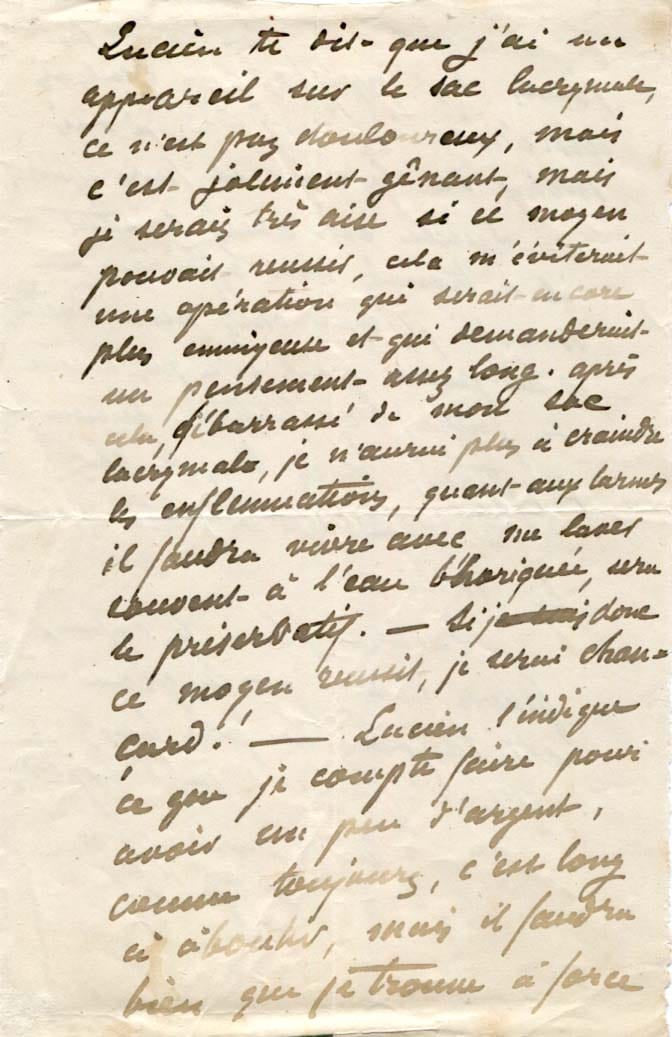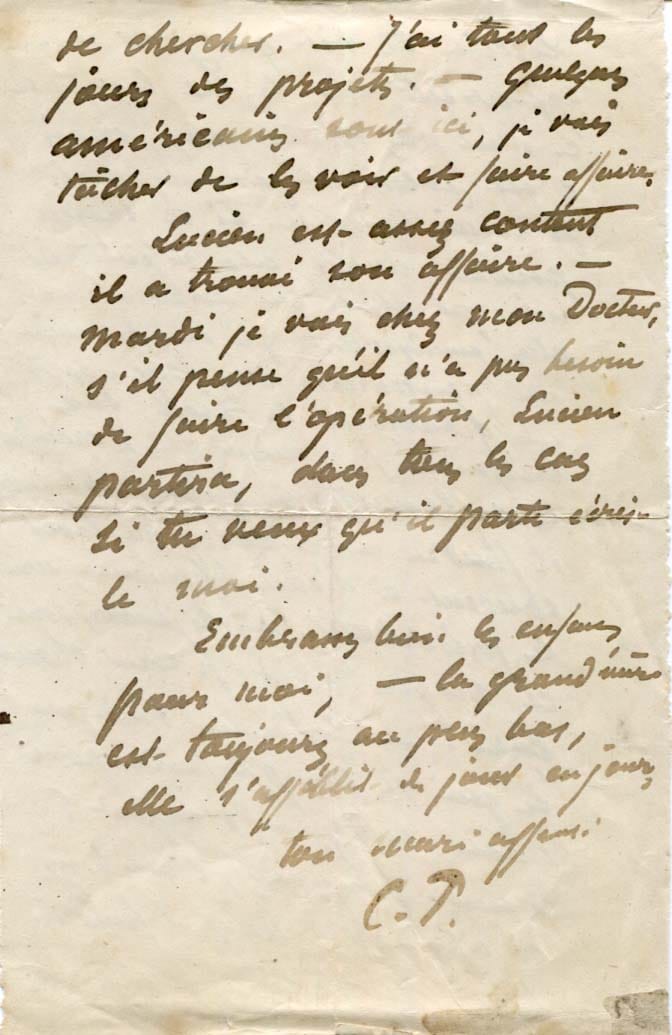Description
Autograph letter signed, two pages (both sides), 4,5 x 7 inch, undated (circa 1888-1889), in French, to his wife Julie Pissarro - concerning his eye problems and projects, written and signed in black ink "C. P.", with light intersecting letter folds and mild signs of wear to the edges - in fine condition.
In parts:
"Lucien te dit que j'ai un appareil sur le sac lacrymal, ce n'est pas douloureux, mais c'est joliment gênant, mais je serais très aise si ce moyen pouvait réussir, cela m'éviterait une opération qui serait encore plus ennuyeuse et qui demanderait un pansement assez long. Après cela, débarrassé de mon sac lacrymal, je n`aurai plus à craindre les inflammations, quant aux larmes il faudra vivre avec me laver souvent à l`eau bhorique, sera le préservatif. - Si ce moyen réussit, je serai chancard ! Lucien t'indique ce que je compte faire pour avoir un peu d'argent, comme toujours, c'est long à aboutir, mais il faudra bien que je trouve à force de chercher. - J'ai tous les jours des projets. - Quelques Américains sont ici, je vais tâcher de les voir et faire affaire [...]. Embrasse bien les enfants pour moi; - la grand-mère est toujours au plus bas, elle s'affaiblit de jour en jour [...]"
Translated:
"Lucien tells you that I have a device on the lacrimal sac, it's not painful, but it's pretty annoying, but I would be very comfortable if this method could succeed, it would save me an operation which would be even more tedious and which would require a rather long dressing. After that, rid of my lacrimal sac, I will no longer have to fear inflammation, as for tears, I will have to live with washing myself often with boric water, will be the preservative. - If this method succeeds, I will be lucky! Lucien tells you what I intend to do to get a little money, as always, it takes a long time to achieve, but I will have to find it by dint of looking. - I have projects every day. - A few Americans are here, I will try to see them and do business [...]. Kiss the children well for me; - the grandmother is still at her lowest, she is getting weaker day by day [...]"
From 1888 until his death in 1903, Camille Pissarro suffered from eye problems (dacryocystitis). He was treated by Dr. Parenteau. As he explains in this moving letter, Pissarro has tried wearing a pillow that compresses the lacrimal sac - with more or less success. He had to constantly wash his eye and carry a bandage. These compulsions compelled him especially to paint landscapes that can be observed from the window of his studio or from the window of a hotel. This led him from 1892 to produce cityscapes in Paris so that he could consult his ophthalmologist at any time. He moved to six different apartments to change perspectives and began painting from the top floors of the buildings. The result was the last series of his cityscapes - this one were the culmination of his work.
Further Information on the person
Profession:
(1830-1903) Danish-French Impressionist and Neo-Impressionist painter born on the island of St Thomas (now in the US Virgin Islands, but then in the Danish West Indies).
Year of Birth: 1830
Certificate of authenticity
All of our pieces are sold with a Certificate of Authenticity. If a piece turns out to be wrong or if you do not like an autograph, you will get your money back for a lifetime.
Payment & Security
Your payment information is processed securely. We do not store credit card details nor have access to your credit card information.



